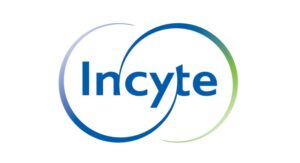
On July 4, 2025, the United States enacted the “One, Big, Beautiful Bill Act” (OBBBA), which has sparked intense debate regarding its potential impact on the nation’s healthcare system. Supporters describe it as a catalyst for growth, while critics warn it could dismantle vital healthcare safety nets. The legislation significantly reduces funding for Medicaid and Affordable Care Act (ACA) subsidies, potentially leaving millions without coverage. Furthermore, safety-net hospitals are expected to experience financial instability, especially those in rural areas, which are already under considerable strain.
A notable aspect of this sweeping legislation is the establishment of the $50 billion Rural Health Transformation Program (RHTP). While this amount may seem modest in the context of the larger cuts, it presents an opportunity for rural healthcare providers to innovate out of necessity. The OBBBA serves as a stress test, challenging the healthcare system to adapt and evolve.
Challenges in the U.S. Healthcare System
The complexities of the U.S. healthcare landscape are evident. The country spends nearly twice as much on healthcare as other high-income nations, yet health outcomes frequently lag behind. Issues such as chronic disease management, maternal mortality, and life expectancy reveal a troubling trend of high expenditure with minimal return.
One significant barrier lies in the divide between traditional healthcare and health technology. While health tech companies innovate rapidly, traditional healthcare environments often resist change. Many hospitals operate on margins as thin as 1-2%, leaving little room for experimentation and adoption of new technologies.
Rafid Fadul, MD, a critical care and pulmonary physician, highlights this disconnect. He has witnessed the difficulties healthcare providers face in integrating innovative tools that could enhance efficiency and patient care. The recent acquisition of Summa Health by General Catalyst for $485 million underscores this challenge. HATCo, a venture capital initiative, aims to transform Summa into a testing ground for new technologies, illustrating the substantial hurdles present in the current system.
The Impact of the Rural Health Transformation Program
Rural hospitals face unique challenges, including thin profit margins, workforce shortages, and geographic isolation. Currently, over 100 rural hospitals are at risk of closure, with approximately 600 considered vulnerable across the country. These institutions often lack the resources and infrastructure to modernize, making them particularly susceptible to systemic shocks.
The RHTP, created within the OBBBA, seeks to address these vulnerabilities. With $50 billion allocated for grants and incentives over the next decade, the program aims to support rural providers in modernizing operations and adopting digital tools. While critics argue that this funding is insufficient compared to the Medicaid cuts, the RHTP’s true value lies in its potential to compel rural healthcare systems to innovate.
The program mandates that funding be tied to transformation, requiring hospitals to upgrade their digital infrastructure and embrace modern healthcare practices. By subsidizing modernization efforts, the RHTP aims to lower financial barriers that have historically prevented rural healthcare systems from adopting new technologies.
If implemented effectively, RHTP could enable rural communities to lead in areas where traditional healthcare has struggled. Initiatives such as virtual-first care could be particularly beneficial in rural settings, where geographic distance makes in-person visits challenging. Additionally, team-based care models could help mitigate physician shortages, allowing healthcare providers to work collaboratively to enhance patient outcomes.
The RHTP also presents an opportunity for rural providers to streamline operations. By adopting modern compliance and quality systems, hospitals can embed oversight into daily operations without adding layers of bureaucracy. Furthermore, reconsidering facility types—such as modular urgent care centers instead of full-service hospitals—could better serve patient needs at a lower cost.
Fadul emphasizes that success will not come from merely patching existing systems but from fundamentally rethinking how healthcare is delivered under pressure. The return on investment from these initiatives could significantly outweigh initial expenditures, with telehealth alone showing potential savings of $147 to $186 per patient visit.
The paradox of fragility in rural healthcare systems reveals that what is most vulnerable can also become a source of transformation. The RHTP could change the dynamics by linking survival to modernization, urging rural providers to embrace innovation rather than resist it.
If the RHTP proves successful, it could offer valuable lessons for healthcare systems nationwide. The focus on rapid iteration, user-centered design, and effective team collaboration could set new standards for healthcare delivery across the United States.
Ultimately, the choice is clear: will rural healthcare systems cling to outdated models or embrace the tools and methodologies that this crisis demands? The RHTP may represent a crucial opportunity for rural America to innovate before the safety net completely unravels. For the broader nation, it could serve as a blueprint for reforming an overpriced and underperforming healthcare system.
As a physician and entrepreneur, Fadul remains optimistic about the potential for transformation. He believes the time to innovate is now, and with the right approach, the healthcare system can fulfill its promise of accessible and compassionate care for all.







